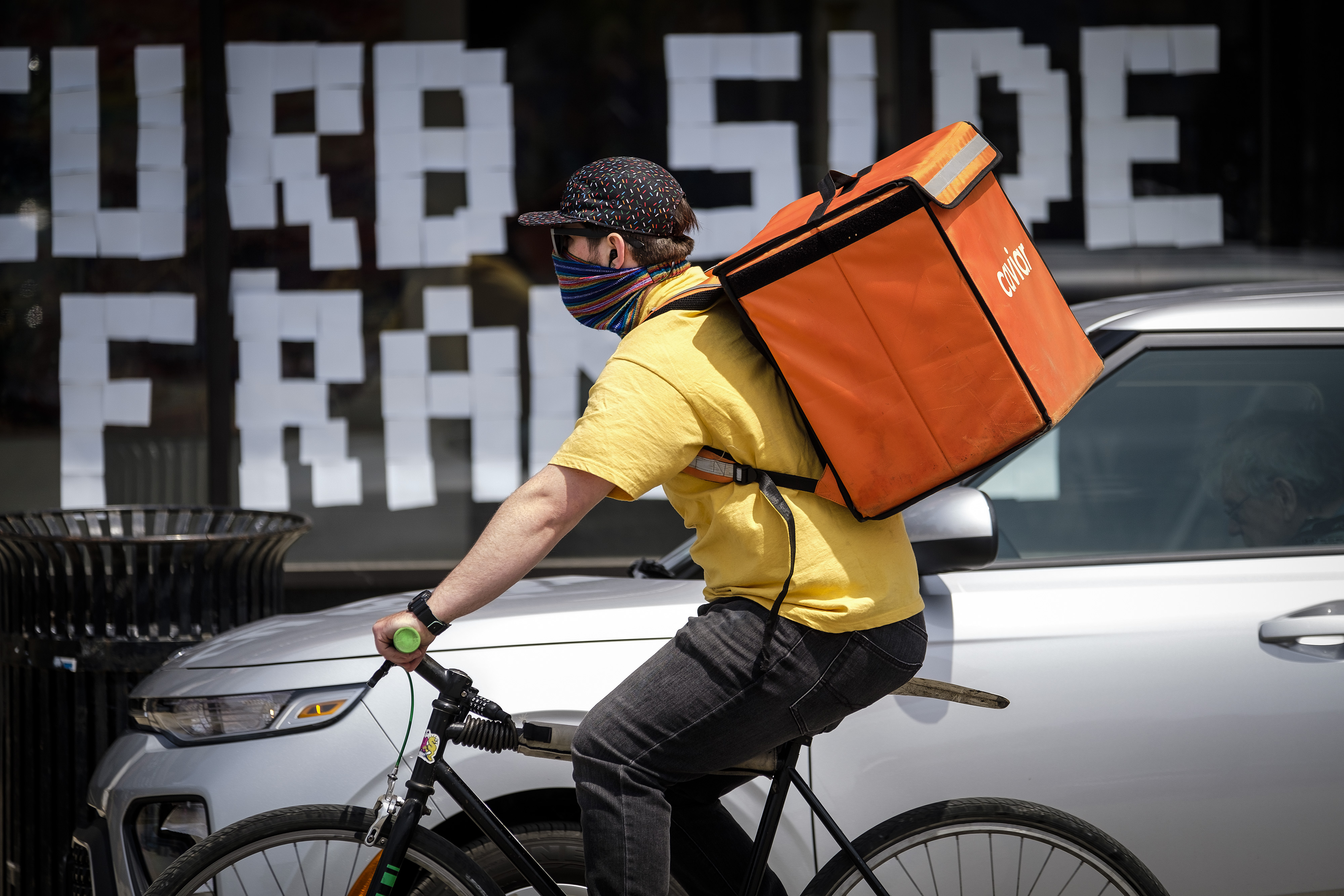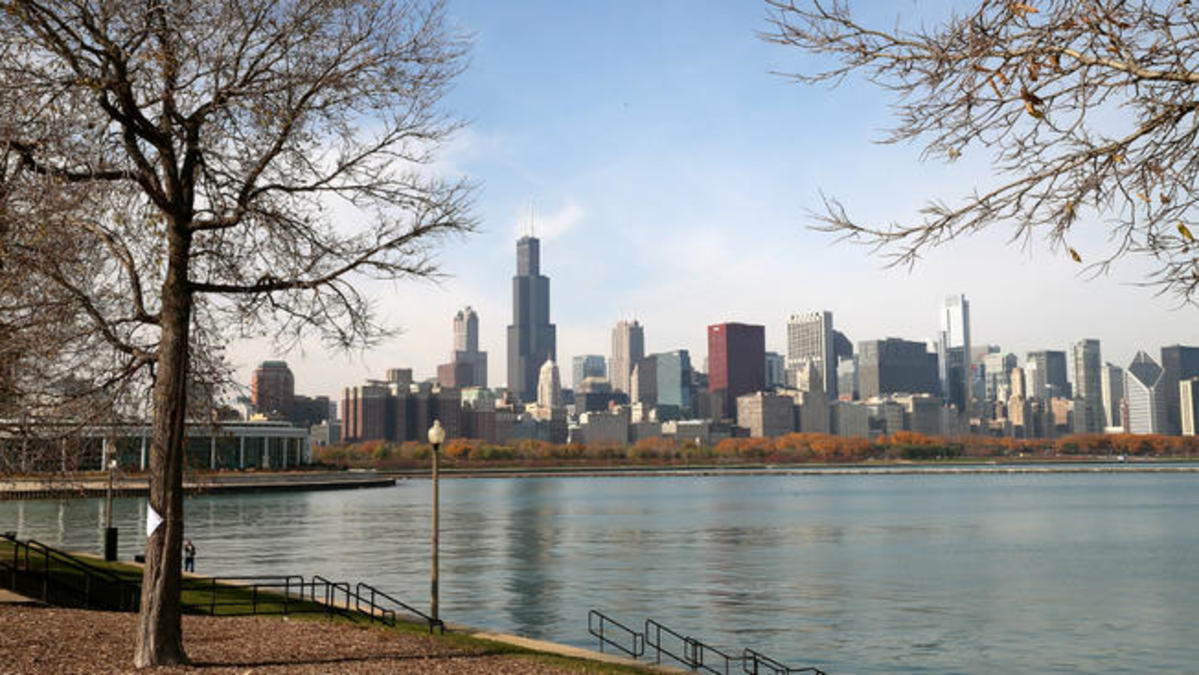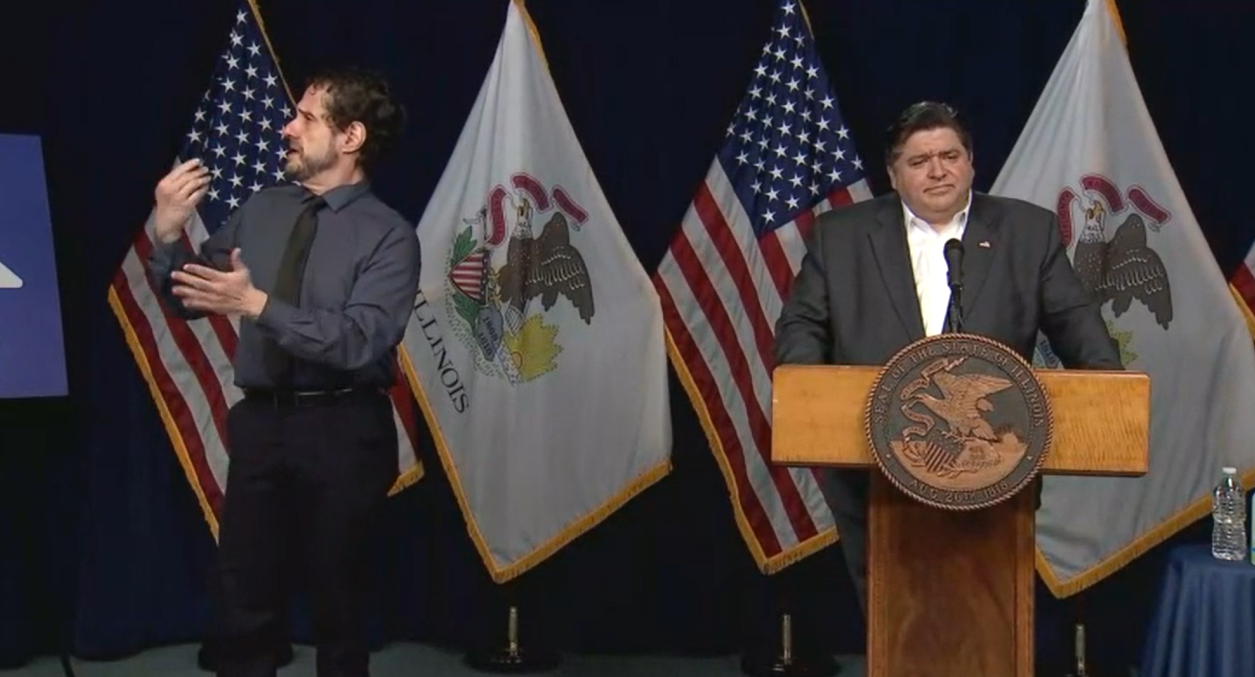Chicago Mayor Lori Lightfoot on Friday unveiled city-specific guidelines for reopening during the coronavirus pandemic.
Lightfoot's plan includes five phases, similar to the roadmap unveiled by Illinois' governor earlier this week. The Chicago phases include the following: strict stay-at-home, stay-at-home, cautiously reopen, gradually resume and protect.
Lightfoot had previously said her guidelines would "complement" Gov. J.B. Pritzker's plan, both of which center on healthcare requirements for a region to enter the next stage of reopening.
“Throughout the COVID-19 crisis, we have been committed to basing our decisions on the science and data related to this disease and communicating our actions to the public in an open and transparent way,” Lightfoot said in a statement. “Though we still have a way to go before we can begin reopening our city, when the time comes, that reopening will follow our thoughtful, data-driven process aimed at ensuring all our residents and businesses are informed and supported every step of the way.”
Here's a look at her plan:
PHASE ONE: STRICT STAY-AT-HOME
– Limit the amount of contact with others; goal is to limit interactions to rapidly slow the spread of COVID-19
• Essential workers go to work; everyone else works from home
• Stay at home and limit going out to essential activities only
• Physically distance from anyone you do not live with, especially vulnerable friends and family
PHASE TWO: STAY-AT-HOME
– Guard against unsafe interactions with others; goal is to
continue flattening the curve while safely being outside
• Essential workers go to work; everyone else works from home
• Stay at home as much as possible
• Wear a face covering while outside your home
• Physically distance from anyone you do not live with, especially vulnerable friends and family
PHASE THREE: CAUTIOUSLY REOPEN
– Strict physical distancing with some businesses
opening; goal is to thoughtfully begin to reopen Chicago safely
• Non-essential workers begin to return to work in a phased way
• Select businesses, non-profits, city entities open with demonstrated, appropriate protections for workers and customers
• When meeting others, physically distance and wear a face covering
• Non-business, social gatherings limited to <10 persons
• Phased, limited public amenities begin to open
• Stay at home if you feel ill or have come into contact with someone with COVID-19
• Continue to physically distance from vulnerable populations
• Get tested if you have symptoms
PHASE FOUR: GRADUALLY RESUME
– Continued staggered reopening into a new normal; goal is to further reopen Chicago while ensuring the safety of residents
• Additional business and capacity restrictions are lifted with appropriate safeguards
• Additional public amenities open
• Continue to wear face covering and physically distance
• Continue to distance and allow vulnerable residents to shelter
• Get tested if you have symptoms or think you have had COVID-19
PHASE FIVE: PROTECT
– Continue to protect vulnerable populations; goal is to continue to maintain safety until COVID-19 is contained
• All businesses open
• Non-vulnerable individuals can resume working
• Most activities resume with health safety in place
• Some events can resume
• Set up screenings and tests at work or with your family
• Sign up for a vaccine on the COVID Coach web portal
What needs to happen to move through each phase?
"The epidemiological criteria for transitioning between phases are rooted in public health guidance and will be reviewed and revisited on an ongoing basis," the mayor's office said in a release. "Health-based metrics are one of the many considerations that the city is weighing to determine the details of the city’s reopening approach and sequencing."
Lightfoot said the city is using these four questions to determine when to move to the next phase:
- Is the rate of disease spread across the city and surrounding counties decreasing?
- Does the city have the testing and contact-tracing capacity to track the disease and
limit spread? - Are there enough support systems in place for vulnerable residents?
- Can the healthcare system handle a potential future surge (including beds,
ventilators and PPE)?
“While our goal is to get as many people back to work as quickly and safely as possible, we will keep data and science as the north stars of this work, as we have throughout the COVID- 19 pandemic,” Commissioner of the Chicago Department of Public Health Dr. Allison Arwady said in a statement. “We also recognize that some populations and families are suffering more than others in this crisis, and we are taking that into consideration as we prepare for reopening as well.”
Requirements to get to phase three:
A set of epidemiological factors has been established to guide the next transition from phase two (Stay-at-Home) to phase three (Cautiously Reopen), including:
• COVID-19 Case Rate (over 14 days, as a rolling average):
o Declining rate of new cases, based on incidence and/or percent positivity
• Severe Outcome Rate (over 14 days, as a rolling average):
o Stable or declining rates of cases resulting in hospitalization, ICU admission, and/or death
• Hospital Capacity Citywide (over 14 days, as a rolling average):
o Hospital beds: <1800 COVID patients
o ICU beds: <600 COVID patients
o Ventilators: <450 COVID patients
• Testing Capacity:
o Test at least 5% of Chicago residents per month
• Testing Percent Positivity Rates (over 14 days, as a rolling average):
o Congregate: <30% positive tests
o Community: <15% positive tests
• Syndromic Surveillance (over 14 days, as a rolling average):
o Declining emergency department visits for influenza-like illness and/or COVID-like illness
• Case Investigation & Contact Tracing:
o Expanded system in place for congregate and community investigations and
contact tracing
"The specific health criteria for transition between the latter phases will be established and released over the coming weeks to ensure the city is open and responsive to new data and information as it arises," the mayor's office stated. "In addition to determining the health-based metrics to move from one phase to the next, the city is actively determining the appropriate sequencing of reopening businesses and public services – taking into consideration both economic enablers such as transportation and childcare concerns, as well as keeping an eye towards economically disadvantaged populations."
Pritzker announced Tuesday the state will also reopen in five phases and on a region-by-region basis. Currently, Chicago, and the rest of Illinois, are in the second phase of that plan, though some regions could enter the third phase by the end of the month. (Read more on the plan here.)
Lightfoot said the city needs to see a decline in cases before it can continue to move forward with easing restrictions.
"I worry a lot about, particularly our micro-businesses. If there's not a solution soon, they're never coming back," she said.
But according to Lightfoot, though the city is seeing progress, "we are not where we need to be yet."
"We can't reopen the city yet," she said.
Chicago health officials say the city still has not reached a peak and cases will likely continue to rise in the coming days.
"We're still at the stage where we're flattening the curve. We're not yet coming down," Chicago Department of Public Health Commissioner Dr. Allison Arwady said Wednesday.
Arwady said the city is still expected to peak in May, however.
"We are making progress, but we're far from out of the woods," Arwady said.
Chicago crossed a grim milestone earlier this week as deaths due to the coronavirus topped 1,000 citywide. So far, the city has reported more than 26,000 confirmed cases since the pandemic began.
Arwady offered a glimmer of hope in the citywide numbers, however.
"At the beginning of the outbreak, we were seeing cases double every two, three, four days," she said, noting however that cases and deaths will likely continue to rise. "We're at the point where we're seeing doubling every 15 days."
Across the state, Illinois health officials reported another 2,641 new cases and 138 deaths on Thursday.
That lifts the state's death toll from the virus to 3,111 fatalities with 70,873 confirmed cases.
The Latinx community in Illinois is testing positive for coronavirus at a higher rate than any other demographic group in Illinois, Gov. J.B. Pritzker said Wednesday. The numbers are similar in Chicago, where officials reported a sharp rise in cases among the Latinx community.
State and Chicago health officials said that numbers in the Latinx community are expected to rise and additional deaths are likely.





